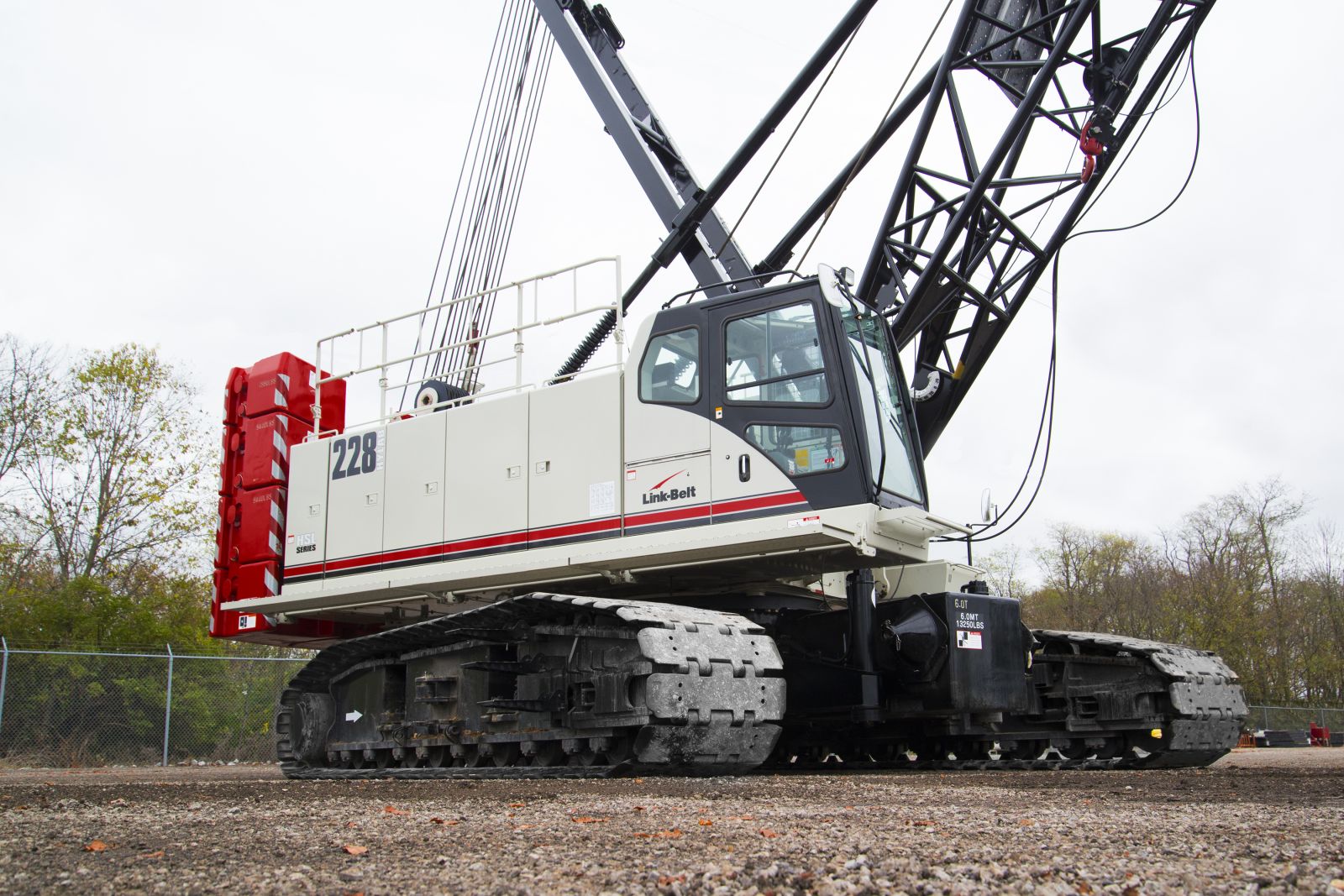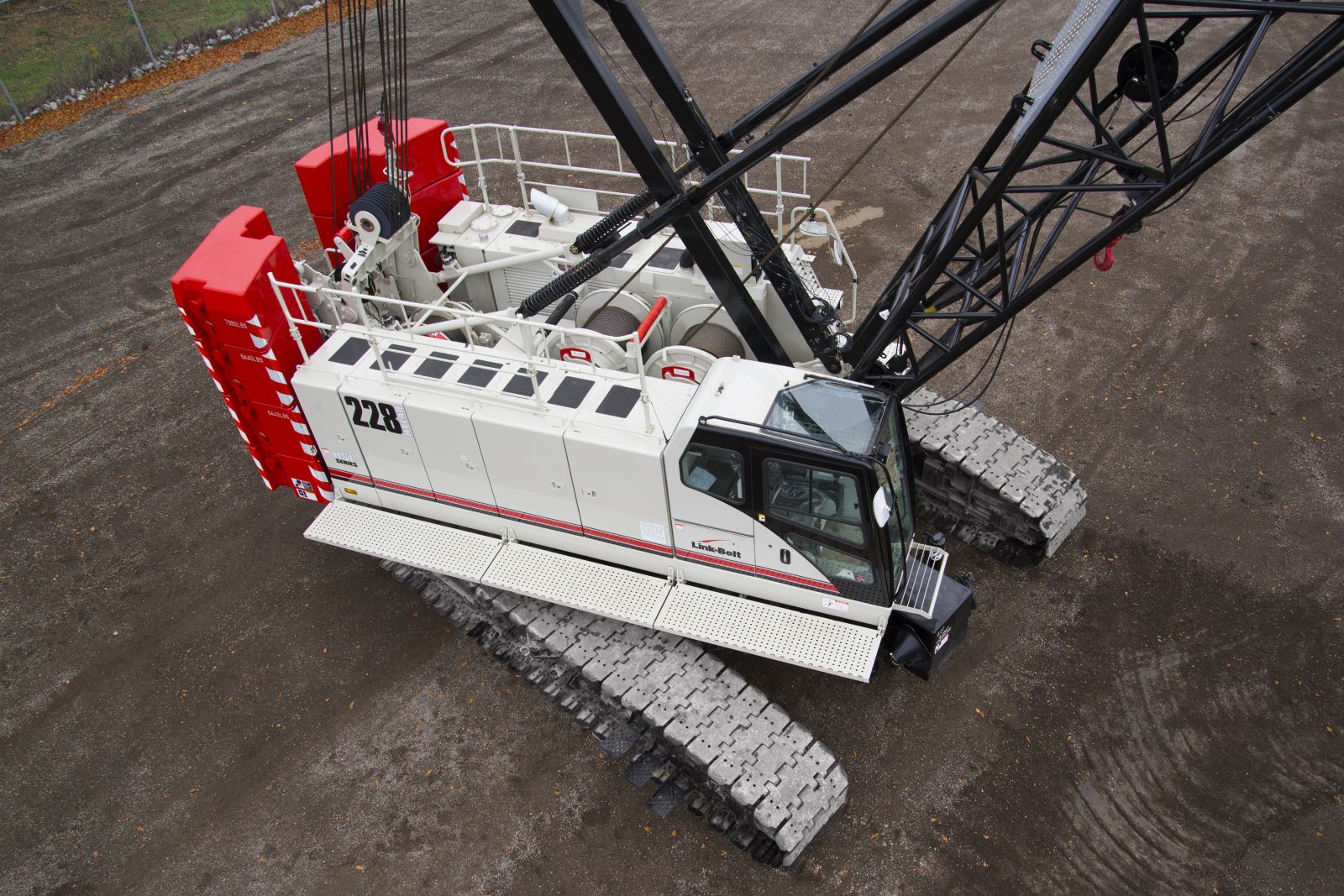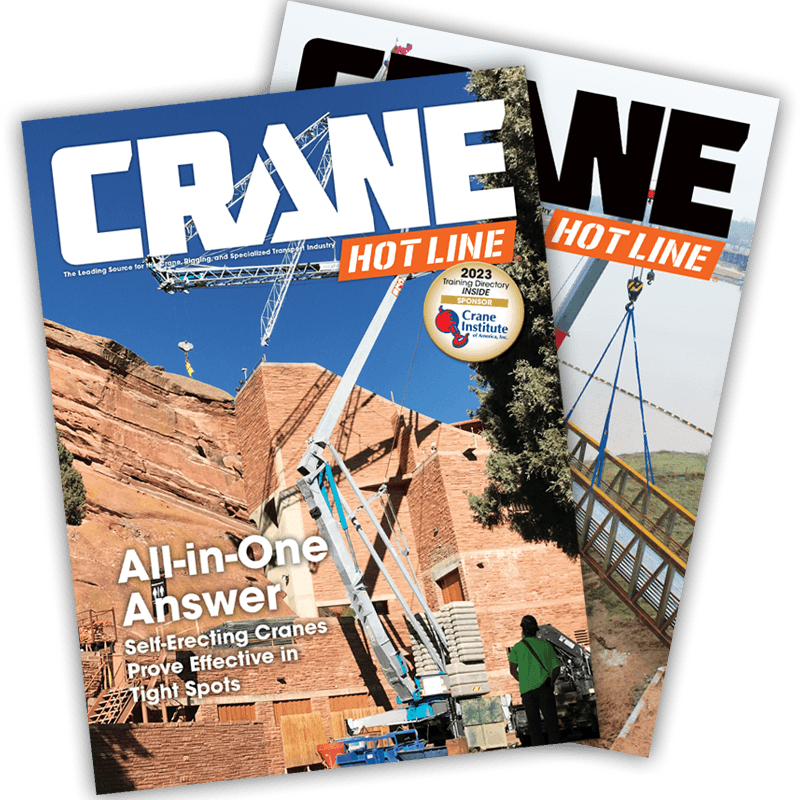Exclusive: Link-Belt to Debut 130-Ton Crawler Crane at ConExpo
 |
|
Enlarge Image Link-Belt has added the 130-ton 228 HSL lattice-boom crawler to its product line. |
November 23, 2016 - One of the current sweet spots for crawler cranes is the 110- to 200-ton capacity range, and Link-Belt has added another entry to the class with its 130-ton 228 HSL. Making its debut at ConExpo 2017, the 228 HSL will be a new addition to the Lexington, Ky.-based manufacturer’s crawler product line and fits between the 110-ton 218 HSL and the 150-ton 238 HSL. Designed to meet the needs of several target markets, including oil and gas, foundation, roads and bridges, and general construction, the crawler offers some unique benefits that make it standout in this class.
Link-Belt added this machine to its crawler crane line to meet the needs of users with larger lifted loads, as well as those who have more flexible road laws that allow for higher main-load weights.
For example, Scott Knight, Link-Belt’s product manager for lattice and telescopic crawler cranes, says the 218 HSL works well in the oil business, but as modules become heavier, higher-capacity cranes are needed to lift them. In some sectors, the road law allowance for higher gross vehicle weights will make the 228 HSL a strong consideration for these buyers. “We wanted to make sure that when the oil business comes back around, we’ve got more choices for the market,” he says.
 |
|
Enlarge Image The 228 HSL features a different upper frame, undercarriage, and boom than the 218 HSL. |
The oil and foundation industries often request an angle boom for rugged duty applications, and Link-Belt offers a 155-ft. angle boom as an option on the 228 HSL. The standard tubular-chord boom has a maximum length of 235 ft., and the optional 75-ft. fixed jib offers commonality, as it is the same one used on the 218 HSL. The maximum combination is 205 ft. of tube boom plus 75 ft. of fixed jib, providing a tip height of 281.5 ft. No luffer is planned for the 228.
The boom’s open-throat top features quick-reeve capabilities and will also incorporate a fold-down, three-sheave-idler assembly that allows for the use of three independent working load lines. Knight says this makes for a more gradual radius rope travel over the head sheaves. The idler can be easily rotated down and stored inside the boom for transport. Both booms use the Link-Belt “pin catcher” feature, which captures the boom connecting pin when removed and provides a storage point for transport.
Matching main and auxiliary “power-up and power-down” winches come standard with a selectable freefall system. The main hoist drums are grooved for 26 mm wire rope, and each winch provides a maximum single-line pull of 43,198 lbs. Link-Belt’s wet brake design gives the operator control of the load on the hook during freefall operation, and it stays cooler, performs more consistently, and lasts longer than a dry brake.
The 228 HSL’s Eco-Winch feature can be activated to allow maximum line speeds when hoisting light loads with the engine at idle. It also reduces operating costs, lessens engine RPMs under load, and produces fewer emissions.
Powering the 228 HSL is a 270-hp Cummins QSB 6.7 Tier 4 Final diesel engine, which delivers 730 ft.-lb. peak torque at 1,500 rpm. “This is the same engine used on all of our cranes from our 80-ton 138 HSL up to our 200-ton 248 HSL” Knight says. “There is a lot of commonality for our distributors and customers.”
From the six-way adjustable seat in cab, the operator can see the crane from a number of different angles with the high-resolution winch-, rear-, and left-side swing-view cameras. The cab also houses the full LED system monitor, AM/FM digital clock radio, and adjustable armchair-mounted controls. An audio/visual travel alarm system alerts crew members of the crane’s movement. The RCL monitoring system provides the operator with all lift information, and it allows the operator to set swing and other control parameters to create a virtual wall with audio and visual alarms, as well as programmable swing-stop with function kick out. Air conditioning and heating is standard equipment.
Knight is quick to point out that the 228 HSL is “not just a beefed up 218. We have a completely different upper frame, undercarriage, and boom on the 228.” The crane’s lower includes swing-out axle extenders that stay with the crane, offering an extra wide lifting base during working mode but swing in and store when transporting. The side frames hydraulically retract and can remain on the unit during transport where weight laws allow. Like all HYLABs, the side frames have completely sealed undercarriage components, as well as hydraulic track-tensioning system, and self-cleaning, full-contact track shoes.
Two 13,250-lb., “hook-and-pin” style carbody counterweights fit between the retracted side frames. The upper counterweight weighs 80,000 lbs. The 228 HSL carries over Link-Belt’s proven hydraulic counterweight removal system, in which the hydraulic cylinders and integral device detach in one piece with the counterweights to reduce the main load’s transport weight.
“Anywhere you can transport a unit under 120,000 lbs., this unit is perfect,” Knight says. If the crane can be moved with the side frames on, the main load weighs 119,541 lbs., and everything else fits on four overflow trucks. Carbody jacks are standard for easy side frame removal, which reduces the main load to 74,225 lbs. and adds only one extra overflow truck.
Link-Belt now has more options in a crawler crane class that’s seeing a lot of action. “On construction sites where the 110-ton crawler just isn’t enough, users can move up to a bigger unit [the new 228 HSL] to do that work,” Knight adds.


